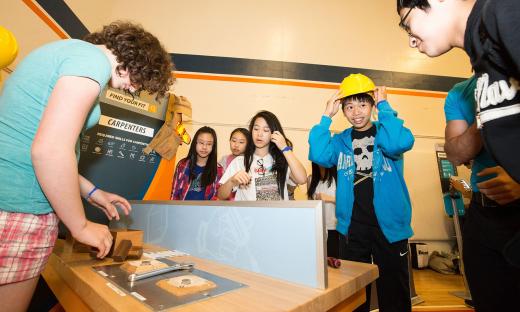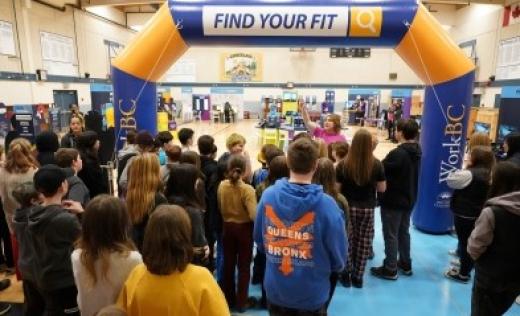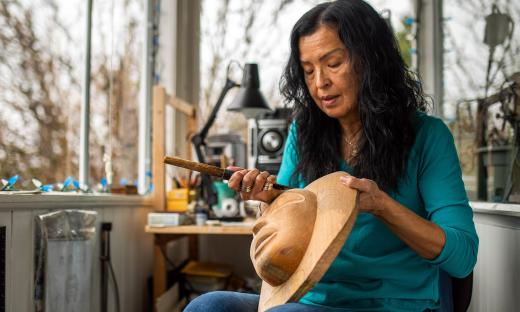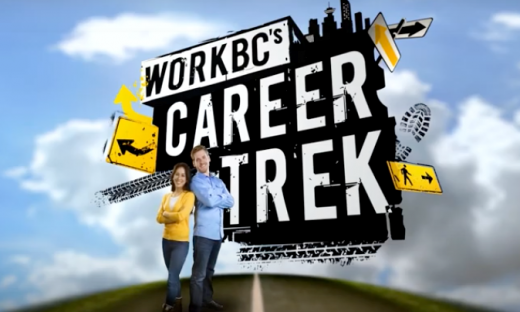This learning activity will build on prior learning in which students have identified career pathways based on self-assessment and other career research. Students will do research using a variety of resources, particularly WorkBC.ca, to identify the external influences that may impact career choices and decisions. Students will reflect on how they might respond to internal and external influences and evaluate their own situation to determine if they need to update their career plans.
In Career-Life Education (CLE), students continue to develop their career planning competencies and further their understanding of the world of work and how change is constant. Gradually they begin to see how their career options are impacted and changed by events in their community and/or globally. By learning about the potential impact of positive and negative external factors, students can prepare to proactively respond to external changes, using the skills, knowledge and abilities they have developed through learning and experience. Understanding that individual and external change is likely, and being prepared for it, is a key career development concept. Students will demonstrate the ability to apply one of the career development High Five Principles, “Change is Constant.”

Teachers may deliver the Career Discovery Quizzes lesson prior to starting this activity, so that each student has identified several possible career pathways.
- Based on interviews with friends and/or family:
- What were some of the factors or trends that shaped their career planning and decisions?
- What were some of the strategies people used to respond effectively to these factors or trends?
- What skills, knowledge and abilities did they draw on if they had to change jobs or find a new work situation?
- If their lives and careers were significantly changed by external factors, were those changes positive or negative? Explain.
- Did you locate any local-to-global social or economic trends that may impact your career choices, community, workplaces or future career options? Explain.
- Did you draw any conclusions about your own career choice or pathway? Do you need to change your plan or adjust your decisions? Why?
- Did you record this information for use when putting together your capstone project?
Career planning and decision-making is not usually based on any one thing but is instead influenced by a number of factors—individual, cultural, social and environmental. The combination and interaction of these influences on decision-making are unique to an individual and their situation. There may also be multiple career options and several “good-fits” instead of a single right choice. As individuals learn and change, and external factors such as the economy or other world events change, individuals will continue to revise and fine tune their career choices.
In Career-Life Education (CLE), students continue to develop their career planning competencies and further their understanding of the world of work. Gradually they begin to see how their career options are impacted and changed by events in their community and/or globally. By learning about the potential impact of positive and negative external factors, students can be prepared to proactively respond to external changes, using the skills, knowledge and abilities they have developed through learning and experience.
Understanding that individual and external change is likely, and being prepared for it, is a key career development concept. Students will demonstrate the ability to apply one of the career development High Five Principles, “Change is Constant.”
This learning activity will build on prior lessons in which students have identified career pathways based on self-assessment and other career research. Students will undertake research using a variety of sources, particularly WorkBC.ca, to identify the external influences that may impact career choices and decisions. Students will reflect on how they might respond to external influences and evaluate their own situation to determine if they need to update their career plans.
- Use WorkBC.ca and other sources to identify factors that influence the B.C. and local economy and personal career prospects.
- Identify factors that could positively or negatively impact career plans.
- Create a product that represents findings.
- Share findings with classmates.
- Reflect on current career plans to determine if revisions should be made.
This activity introduces students to features in WorkBC Explore Careers that show external factors that impact career planning and decision-making. As a learning opportunity, students will create scenarios to apply their knowledge and then share their scenarios with classmates.
Teachers will give students an orientation to Explore Careers and demonstrate the features that can be used to support their research.
- Teachers and students brainstorm on the external factors or trends that could influence career and life choices.
- Write the factors identified on a poster/board/screen and add any that may have been missed.
- Examples could be local, provincial, federal or international elections; pipeline approvals; development of green technologies; wildfires; earthquakes; infectious diseases; increases in the costs of building materials; major weather events; mountain pine beetle and other global warming effects.
- External factors include:
- Economic
- Global
- Demographic (for example: aging population, rising youth population)
- Employment forecasts
- Media
- Environmental
- Technological
- Political
- Health
- Trends (for example: buy local initiatives)
- Write the factors identified on a poster/board/screen and add any that may have been missed.
- Teachers and students brainstorm on the impacts these external factors could have on a variety of careers. Write the impacts identified on a poster/board/screen.
- Suggest several occupations to discuss. Impacts could include:
- Technological change producing job openings/losses.
- Shortage of raw materials producing a rise in material/production cost.
- Shifting demographics resulting in changes in family support service.
- Changing social values resulting in postponement or cancellation of project.
- Loss of natural resources reducing job options in resource-dependent towns.
- Changing land costs resulting in company relocation to new communities.
- More complex jobs requiring additional or specialized training.
- New markets opening up.
- Suggest several occupations to discuss. Impacts could include:
- After brainstorming and discussing the impacts of external factors, let students know they will spend time researching one of the factors or trends that had a significant impact and then share their findings with the class.
- Teachers will give students an orientation to Explore Careers to learn about the various sections that relate to external factors or trends. This will ensure that most of the features on the Explore Careers landing page will be used.
- Assign students the following:
- Ask students to get into groups of two to three.
- Assign one career factor to each group to research.
- Ask the groups to:
- Create a working definition of the factor or trend.
- Research the factor or trend, using Workbc.ca and other sources
- Develop examples of how the factor or trend has impacted, or could impact, people personally, socially and economically, including their career choices
- Use examples of parents, siblings or other people in their personal lives who have worked or are working now.
- Suggest they interview some of these people to see how and which factors impacted their personal, social and economic lives, and therefore their career choices. Some questions could be:
- What was the factor or trend that impacted or changed your career path, and what happened as a result?
- What were some of the strategies you used to respond to the impact? Were these effective?
- Were you able to transfer your skills, knowledge and abilities to a new work situation?
- Create a scenario based on the community interviews that demonstrates how a person’s career could be impacted by factors or trends. Include the options the person has for future career planning and decision-making.
- Record the information on paper or electronically.
- Ask a representative from each group to share their findings.
- As an extension of this activity, teachers could invite guest speakers to the classroom to share their experiences and discuss factors or trends that impacted their career planning and choices.
Assessment Ideas
Teacher Assessment
- Are students able to identify examples of how trends could impact or influence people personally, socially and economically, including their career choices?
- Are students making connections between factors and trends and the impacts these had on the careers of their friends and family?
- Has there been sufficient discussion about the various factors and their impacts to allow students to undertake real-time research in identifying the factors that may impact their own career planning and decisions?
This activity will encourage students to personalize their research and consider the impact of factors on their own career planning and decision making. Students will do research using a variety of sources to identify various factors, trends or specific events that could influence their career planning and decision-making.
Through this activity students will develop the ability to locate and apply career and labour market information to make potential career and life decisions. At the same time, they will identify and explore local-to-global social and economic trends to increase their awareness of their impact on individuals, communities, workplaces and career opportunities.
Students should complete the Career Discovery Quizzes or another personal career assessment that results in the identification of two career options. If they already have their own vision for their preferred future, they should develop a plan A and B option.
The suggested duration for this activity is three to four weeks, to give students time to gather information from a variety of sources including identifying factors and trends that could have an impact on their career pathway.
- Students will develop a research approach for their top two career choices, as well as two locations in the province where they could work in their chosen career. This will help personalize their understanding of local economies and external influences.
- Brainstorm with students around the sources of information they could use including WorkBC.ca. Other sources may include newspapers (local, provincial or national) and magazines (digital or print).
- Ask students to create a hypothesis or prediction about their career choice, with factors and trends that may have positive and/or negative impacts. Provide the following as a guide:
- Create a picture/idea of the kind of workplace environment you will transition into.
- Which factors and trends could potentially impact or influence your choice of career?
- What would some of the impacts be?
- What skills, knowledge and abilities would help you reduce the impact or take advantage of a particular factor? List and explain.
- Students will create a representation of factors or trends they observed through their research that could influence their career decision. The product should clearly explain the impact and influence on their plan A and B career options. Suggested format:
- Digital book using the Book Creator App on the iPad or similar app.
- Mind map using an app or chart paper.
- Slide presentation using Google Slide or Microsoft PowerPoint.
- Poster using Pic Collage app on the iPad.
- Handcrafted poster.
- Have students share their products with the class and receive feedback.
Assessment Ideas
Self-Assessment
Ask students to provide evidence of the statement:
- I created a research approach that included my top two career choices (plan A and B) and two locations in the province where these career choices could be employed. (Note: if you plan to work abroad, include that location.)
- I created a product that identified the factors and trends that could influence my career planning and decision-making.
- I have clearly related the impact and influence of factors and trends on my plan A and B career options.
- I put a link in my product to my occupation found on Career Trek (if applicable).
- I had a peer review my product and I received feedback for improvement.
- I shared the product with the class and they learned about factors and trends they may not have considered.
Teacher Assessment
Teacher creates rubrics to assess product.
Based on interviews with friends and/or family, students will individually answer the following questions. Ask them to write their answers on paper or to email and submit it as an exit slip.
- What were some of the strategies people used to respond effectively to the impact of external factors?
- What transferable skills, knowledge and abilities did friends and/or family draw on if they had to change jobs or find a new work situation?
- Did you identify positive or negative changes to their lives, communities, workplaces and career opportunities as a result of a factor or trend? Explain the situation.
- During your research, what factors or trends did you identify that could influence your own career planning and decisions?
- Did you draw any conclusions about your own career pathway? Do you need to change your career plan or adjust your decisions? Why?
Assessment Ideas
Self-Assessment
Ask students to submit the reflection questions as an exit slip.
Teacher Assessment
- Collect the reflection questions as an exit slip, and review for completion.
- Use the responses to the reflection questions to inform the success of the learning activity and as a way to make improvements for future learning plans.
This lesson plan supports elements of British Columbia's Career Education Curriculum as outlined below. For further details on the curriculum itself, visit the Ministry of Education's Career Education Curriculum webpage.
- Career-life decisions are influenced by internal and external factors, including local and global trends.
- Career-life choices are made in a recurring cycle of planning, reflecting, adapting and deciding.
- Career-life development:
- Mentorship opportunities.
- Connections with community:
- Factors that both inform career-life choices and are influenced by them, including personal, environmental and land use factors.
- Career-life planning:
- Career-life development research.
- Methods of organizing and maintaining authentic career life evidence.
- Models of decision-making and innovative thinking for flexible planning and goal setting.
- Financial planning tools, pre- and post-graduation opportunities, and local and global and market trends.
- Examine: Consider the role of personal and employment networks in exploring career-life opportunities.
- Interact: Apply a mentor’s guidance in career-life exploration.
- Interact: Collaborate with supportive community members to explore the reciprocal influences career-life choices.
- Experience: Identify career-life challenges and opportunities and generate and apply strategies.
- Initiate: Explore and reflect on career-life roles, personal growth and initial planning for preferred career-life pathways.
- Communication:
- Acquire, interpret and present information.
- Critical thinking:
- Ask questions, consider options and draw conclusions.








